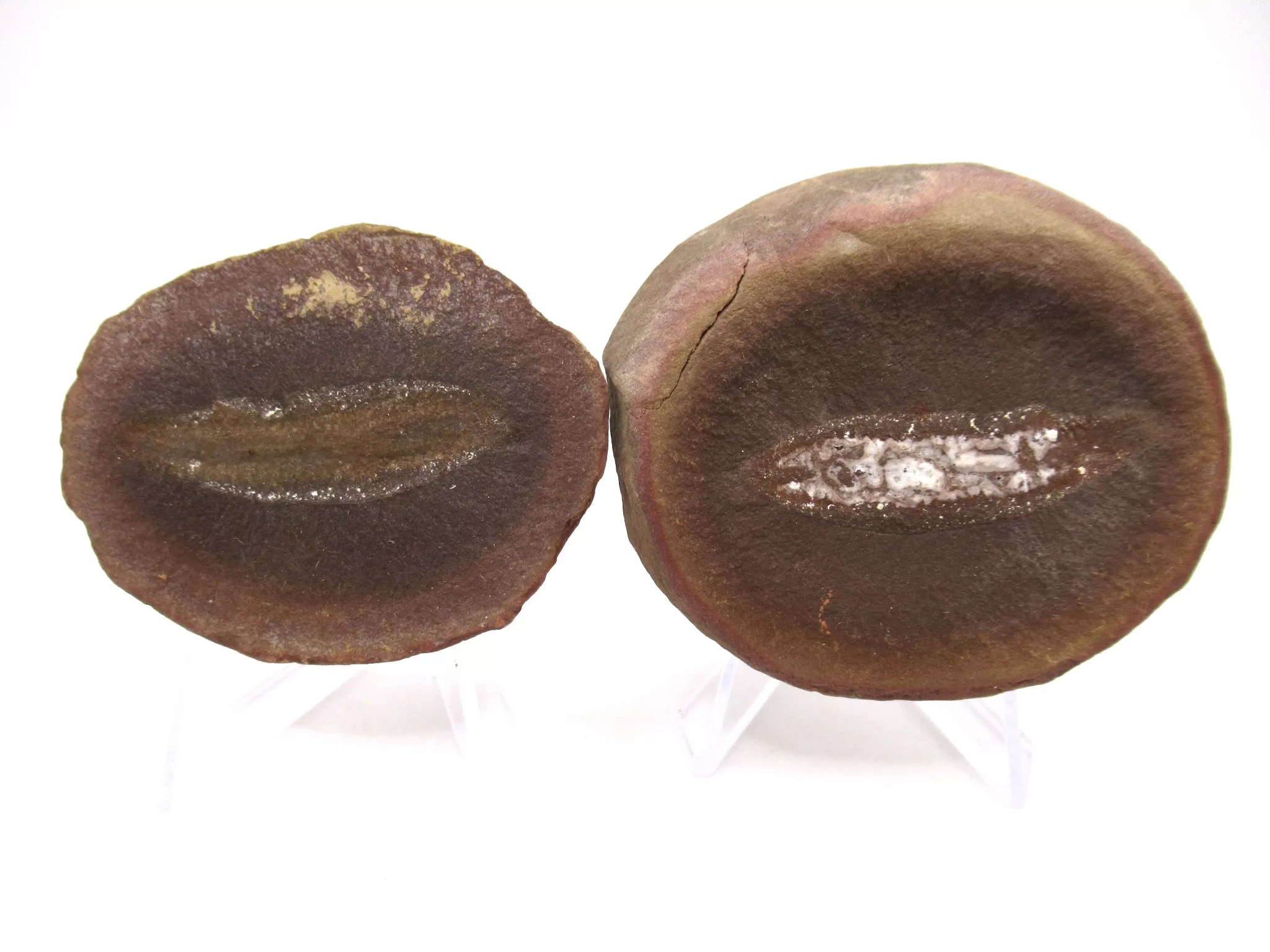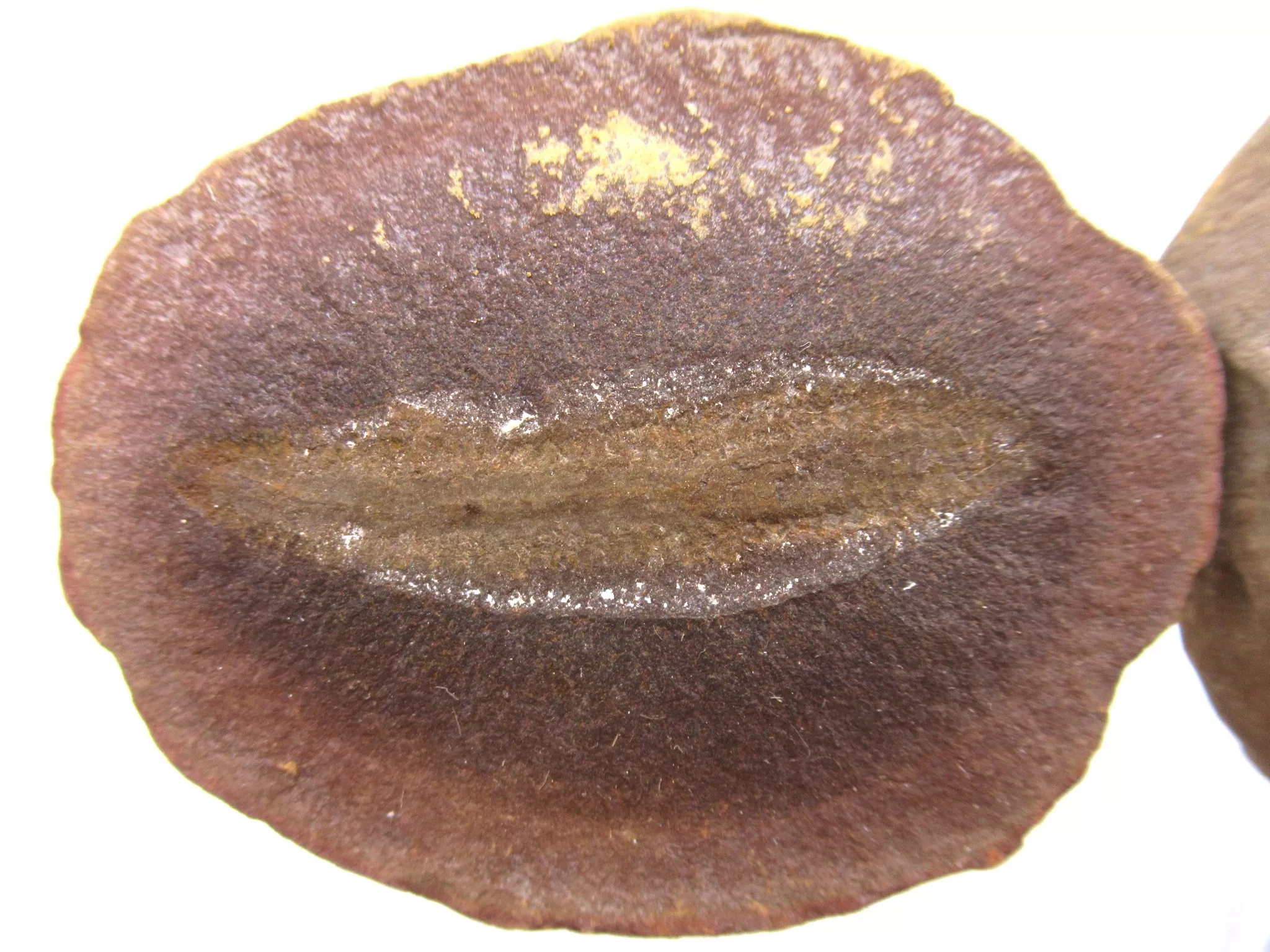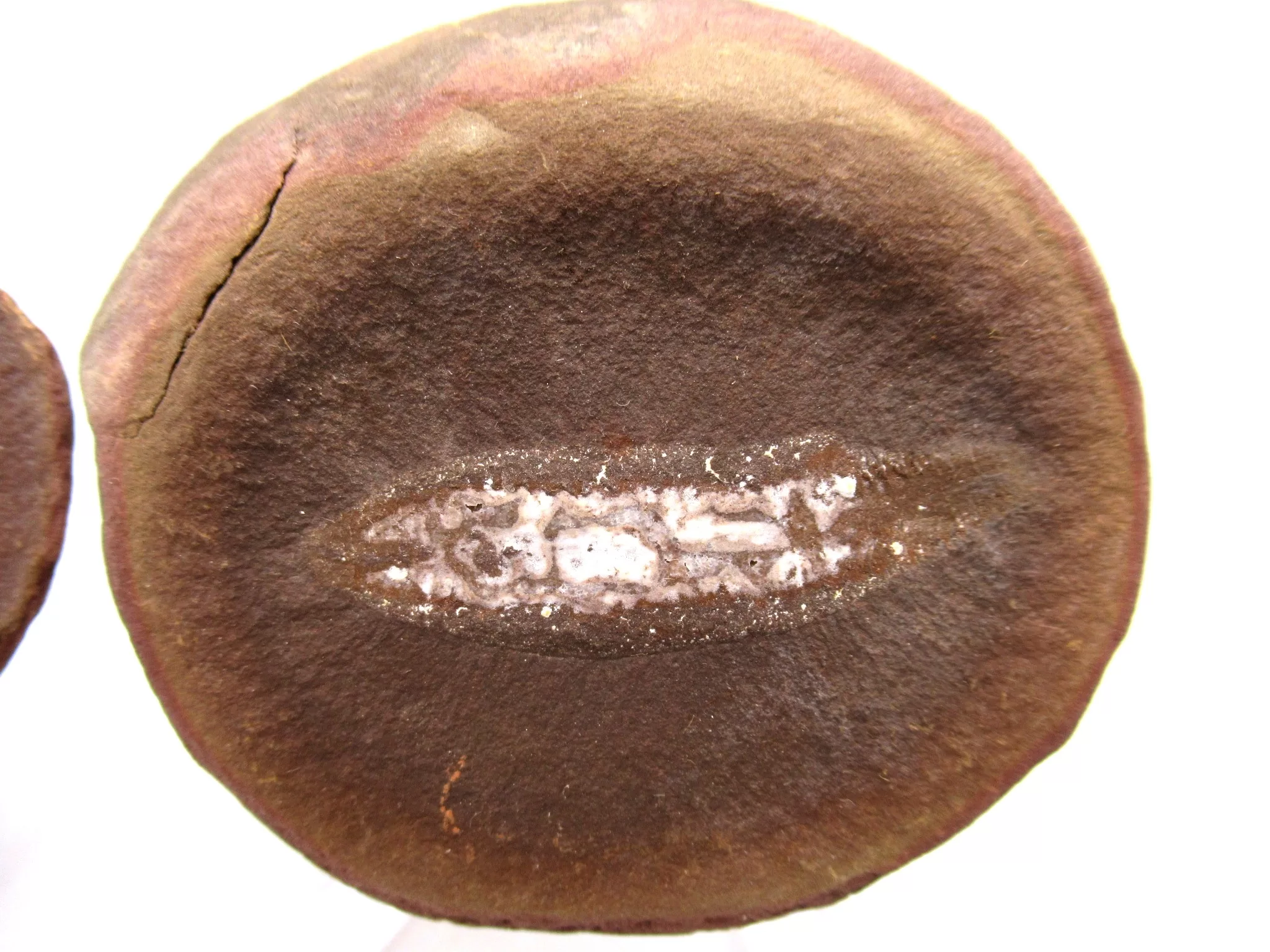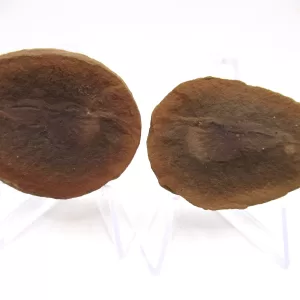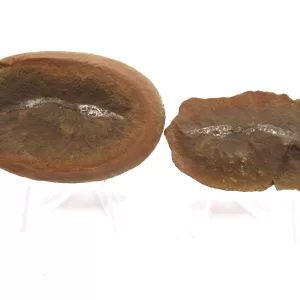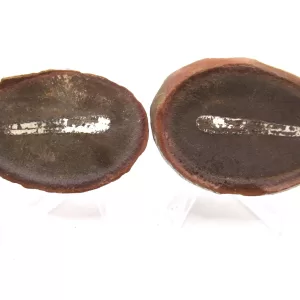Description
- Mazon Creek Worm Nodule – Plain Worm (Astreptoscolex anasillosus)
- Pennsylvanian Age
- Carbondale Formation
- Essex, Illinois
- The nodule measures 2.63″ long
- More Mazon Creek Fossils for Sale
The Mazon Creek fossil beds are a conservation lagerstätte found near Morris, in Grundy County, Illinois.
Mazon Creek fossils are preserved in ironstone concretions. The concretions were formed approximately 300 million years ago. These concretions frequently preserve both hard and soft tissues of animal and plant materials. In addition many soft-bodied organisms that do not normally fossilize are preserved.
The quality, quantity and diversity of fossils in the area, known since the mid-nineteenth century. This makes the Mazon Creek lagerstätte important to paleontologists who are able to reconstruct the paleoecology of the sites.
Mazon Creek fossils are found in the Upper Carboniferous Francis Creek Shale. However the type locality is the Mazon River (or Mazon Creek). This is a tributary of the Illinois River near Morris, Grundy County, Illinois. The 25 to 30 meters of shale were formed approximately 300 million years ago, during the Pennsylvanian period.
The fossiliferous concretions are usually found within the thickest deposits of Francis Creek. The concretions occur in localized deposits within the silty to sandy mudstones, in the lower four metres of the formation.
Polychaete worms of the Essex Fauna, as a group, were large, predaceous, and free swimming. This is in contrast to recent marine polychaetes, which tend to be generally small sedentary, and deposit or suspension feeders.
The Mazon Creek flora comprises over 400 species from at least 130 genera. However, the true number of species is difficult to determine. Paleobotanists name separate plant structures with different names by convention, inflating the number of fossil plant taxa. Paleobotanists are currently determining which taxa are valid.

